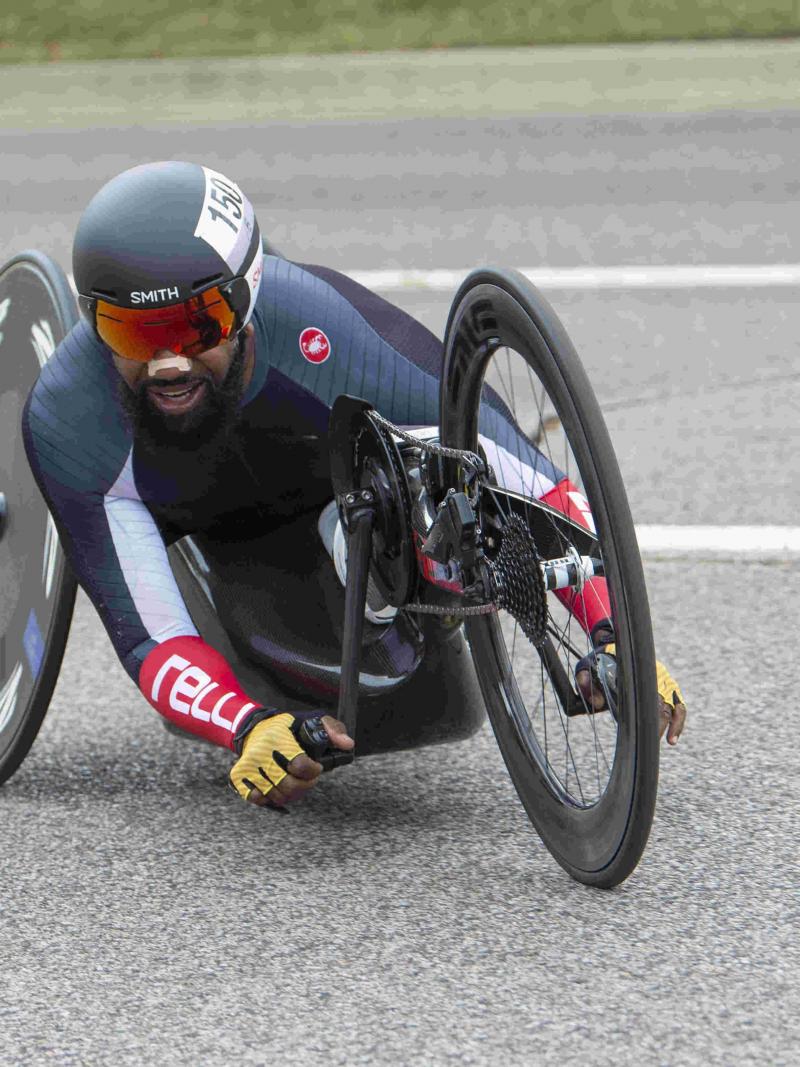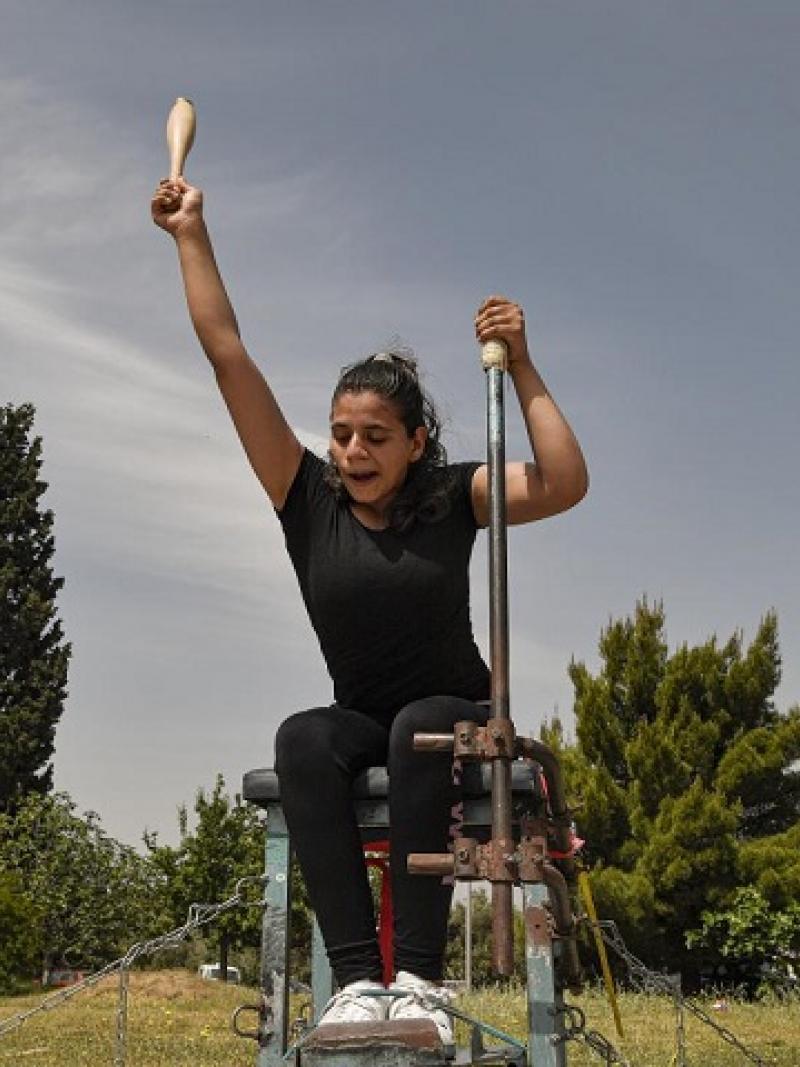Kazuhei Kimura riding in sync for Tokyo
The vision impaired cyclist from Japan had to learn to put his trust in the hands of his cycling partner 03 Jun 2021
On the ocassion of World Bicyle Day, we focus on Japanese cyclist Kazuhei Kimura who is aiming for a medal at the Tokyo 2020 Paralympic Games in tandem cycling.
Kimura, who is the 'stoker', will compete with with his partner Takuto Kurabayashi, an experienced pilot and gold medallist from the 2016 Asian Cycling Championships.
In tandem cycling, a sighted athlete (called a 'pilot') controls the steering while a 'stoker' on the back entrusts everything to the pilot as they ride in sync. They can go as fast as 80km/h on a track race and over 100km/h during a road race.
“In competitive tandem cycling, you put your life on the pilot,” Kimura explained.
But how scary is it to ride without sight? Well, Kimura answered with a laugh: “I no longer have fear."
“The biggest question is whether you can trust your pilot. If there is the slightest doubt between the partners, it will lead to an accident. With Kurabayashi, I can trust him as a person and depend my life on him," he said.
"We’ve fallen off a bike several times, but we race as one. I don’t mind getting injured if it happens with him. I have absolute trust in him, so I’ve decided to follow whatever Kurabayashi says. If he tells me to turn right, I will turn right. The most important thing is not to interrupt the pilot so he can move freely.”
Feeling the speed and wind together
Born with a vision impairment, Kimura had been playing football with sighted children since he was in third grade. However when he was in senior high school, football required more speed which he couldn't do with his worsening eyesight.
“I positioned myself way too far from the ball, and I thought, 'Wait a minute. Something is not right’,” he recalled when he tried heading the ball once.
That was the first time he accepted his impairment.
Although he switched to football 5-a-side, aiming to play at the Paralympic Games, he had to give up that dream because he still had a degree of vision that made him ineligible for the Games.
It was around that time when he had his first opportunity to try Para cycling at Hokkaido Sapporo Special Needs School for the Visually Impaired. This trial session was organised shortly after the Rio 2016 Paralympic Games by Taishi Kenjo, the head coach of Japan’s national team, with the sole intention of finding stokers.
“It had been two or three years since I stopped riding a bike because of my worsening eyesight. When I tried a tandem bicycle for the first time, I found it fun and interesting, feeling the speed and wind which I couldn’t experience alone,” Kimura recalled.
That's when he decided to jump into the world of Para cycling.
Understanding our habits
For a year after the trial session at his school, Kimura borrowed equipment and trained by himself. Then in July 2017, he joined a training camp, where he met his future partner Kurabayashi for the first time. While the later was an experienced cyclist, Kimura was just a novice.
He asked Kurabayashi about every single detail, even how he "should pedal on a bike". Naturally, they couldn’t ride in harmony in the beginning.
When they would try to ride out of the saddle, which would allow them to accelerate, Kurabayashi had to verbally tell Kimura every time what to do, but it meant they would slow down for a few seconds just to say, "let’s go". In order to overcome this challenge, Kimura decided to figure out the right timing and follow the way Kurabayashi moved.
"Kurabayashi tends to relax his elbows a little bit right before moving. There are so many hints you can use. We found our harmony as we spent a lot of time riding together."
The joy of riding in the lead-up to Tokyo 2020
For the duo, now in their fourth year as a pair, the biggest target at the Paralympic Games is the 4,000m pursuit - an event they won at the 2018 Asian Para Games.
“We’ve worked together as a pair for the Paralympic Games, so we’d like to do our best to win a medal in the event we perform well in,” Kimura said.
They have been working on building up their speed.
“Since we can’t shift gears on a track, we’ve been focussing in training to increase our physical strength so that we can reach the top speed in high gear which helps us go faster," he said.
"Each track has different corners in terms of angle and length. But we’ve been practising on the very track that will be used at Tokyo 2020 for quite a while, and we’ve got familiar with it. So, I think we are in a better position than teams from other countries.”
Tandem cycling is also fun because of its unique process, which sees the pilot and stoker decide how to train and race themselves.
“It sure is nice to feel the wind when riding a bike. But another great thing about this sport is that how the two of us discuss [our objectives] and try to bring results. These two things really fascinate me.
“I feel really good when we perform exactly how the two of us envisioned,” Kimura added, with a smile.
So, what does Kimura envision for Tokyo 2020?
Racing for a medal, of course, and bringing glory to his nation at a home Paralympic Games with his tandem partner Kurabayashi.

 Facebook
Facebook
 Instagram
Instagram
 Twitter
Twitter
 Youtube
Youtube
 TikTok
TikTok
 Newsletter Subscribe
Newsletter Subscribe




